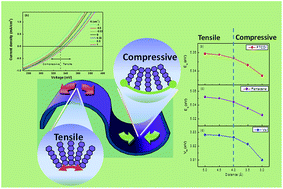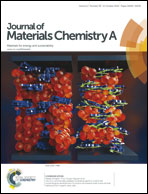Open-circuit voltage shifted by the bending effect for flexible organic solar cells
Abstract
The shift of the open-circuit voltage (Voc) of flexible organic solar cells (OSCs) under bending conditions was investigated by fabricating bi-layer heterojunction and polymer-based OSCs on flexible polyethylene terephthalate (PET) substrates. To realize the performance variations of flexible solar cells characterized by important parameters, Voc was measured when the substrate was bent under various curvatures. The Voc was increased and decreased by using tensile and compressive stresses, respectively. The ratio of increase for Voc is larger than the ratio of reduction, thus indicating that the intermolecular distance of an organic semiconductor is difficult to change because of the strong electrostatic repulsive force. A quantitative analysis of energy levels by the photoluminescence spectrum, UV-visible absorption spectrum, and quantum chemical calculation at various bending states was used to explain the Voc as a function of bending curvature. The peak shifts of UV-visible absorption and photoluminescence spectra provide direct evidence of the variation in energy levels when devices are bent, which causes Voc shifts. For bent organic semiconductor films, the bending curvature-dependent intermolecular distance was studied by Raman spectroscopy by analyzing the intermolecular coupling energy. This study shows that the change of Voc cannot be neglected in the application of flexible OSCs on a flexible loading circuit.


 Please wait while we load your content...
Please wait while we load your content...